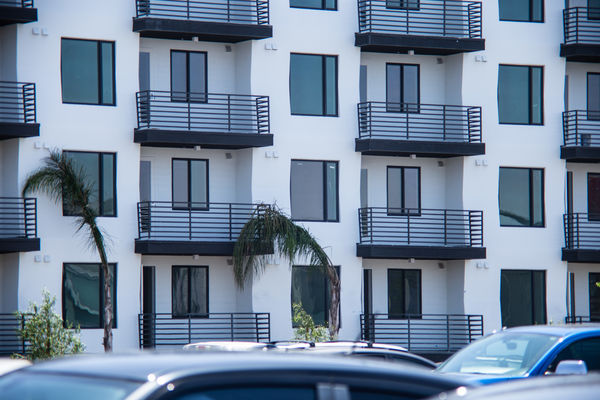Posts for: juanbalv
Aug 17, 2018 19:42:05 #
Highly erudite, blackest, and wonder of wonders, I understood some 70 to 80 percent; my deficiency. I really appreciate your input. Thank you much.
blackest wrote:
If you understand focus it kinda drops into place.... (show quote)
Aug 16, 2018 17:58:27 #
TriX wrote:
Just to add to the above excellent answer, let me suggest the following recent thread, which addresses the specific case of adapting Canon FD lenses to EOS bodies: https://www.uglyhedgehog.com/t-546539-1.html

Aug 16, 2018 17:28:01 #
Thank you again CHG_CANON, you have answered my question. Given the presence of optics on my Fotodiox FD to EOS lens adapter, https://fotodioxpro.com/products/fd-eos-p-dc, I felt that there was, because of the optics, some type of factor involved, degradation of IQ, because of the optics, notwithstanding. Again thank you, I am glad there are people like you in this blog to provide help for neophytes like myself. I will follow by posting some photos I made with an FD 135mm f2.5 prime in combination with the above mentioned FD to EOS adapter.
CHG_CANON wrote:
The issue with FD lenses is the "42mm flange ... (show quote)
Aug 16, 2018 14:08:17 #
BebuLamar wrote:
Normally the lens mount adapter doesn't change anything so the angle of view doesn't change. Of course if you mount the lens on a body with different size sensor then the angle of view would change. The speed booster is kind of the reverse of the extender. It reduces the image circle so that when mounting a lens on a body with smaller sensor the crop factor is less and the lens speed increase.
But a simple answer to your question the adapter doesn't change the angle of view.
But a simple answer to your question the adapter doesn't change the angle of view.

Aug 16, 2018 14:06:54 #
Thank you Vietnam Vet from another Vietnam Vet.
Vietnam Vet wrote:
Putting a lens adaptor (using a film camera lens on a digital camera) between the lens and camera body would seem to make a change. However, whatever change there may be is not noticeable.
Aug 16, 2018 14:05:48 #
Thank you CHG_CANON, the 77mm result was a typo. My idea is that the hypothetical extension will change the angle of view to 70mm. Physically the 50mm lens remains a 50mm lens, remains a... I do keep mentioning adapter because that is my main interest to understand the arithmetic of lens adapters. For my purposes, I am interested in using FD, M42, and K mount lenses with my Canon DSLR's. I use an EOS 6D as well as a 60D. Your last statement that there is no universal generalizations that can be made, is somewhat problematic as manufacturers of lens adapters do not provide such information. Thank you indeed for your input, I really do appreciate it.
CHG_CANON wrote:
You seem to have multiple topics mixed together. N... (show quote)
Aug 16, 2018 13:51:36 #
I see that speed booster is a "reference" to Metabones lens adapters that include optics for the purpose of reducing focal length: https://en.wikipedia.org/wiki/Lens_adapter. This then is a way of avoiding the effect of angle of view change, albeit, perhaps, with some IQ degradation? Am I to assume that any lens adapter with optics included, such as some Fotodiox, would provide the same utility? Or is this attributable to Metabones only?
Aug 16, 2018 13:43:39 #
Assuming that the lens adapter is not a booster type, What is a booster type lens adapter?  ) my question refers to the actual change in angle of view. For example, a 1.4 extender will add that quantity to the angle of view of a 50mm lens and render it with an angle of view at 77mm, right? I can sink my teeth on that. But what about a lens adapter?
) my question refers to the actual change in angle of view. For example, a 1.4 extender will add that quantity to the angle of view of a 50mm lens and render it with an angle of view at 77mm, right? I can sink my teeth on that. But what about a lens adapter?
 ) my question refers to the actual change in angle of view. For example, a 1.4 extender will add that quantity to the angle of view of a 50mm lens and render it with an angle of view at 77mm, right? I can sink my teeth on that. But what about a lens adapter?
) my question refers to the actual change in angle of view. For example, a 1.4 extender will add that quantity to the angle of view of a 50mm lens and render it with an angle of view at 77mm, right? I can sink my teeth on that. But what about a lens adapter?BebuLamar wrote:
If the adapter is not a booster type and the camera bodies have the same size sensor (for example adapting a Leica M lens to a Sony A7) then there is no change in angle of view.
Aug 16, 2018 13:27:19 #
First of all, let me apologize for what I know must be an already answered question ad-infinitum. Having said that, I must confess my relative unease effecting searches. Here is the thing, irrespective of any crop factor, I believe that the use of lens adapters must impose a change on the angle of view of a given photograph. After all, extenders and multipliers do change the angle of view. If I am correct in my thinking, why is it that I can not find a satisfactory answer to my question? What is the change in angle of view when using a lens adapter?
Aug 15, 2018 19:28:19 #
Aug 15, 2018 19:23:41 #
I refer you to Melania's jacket. LOL
mrjcall wrote:
Aug 12, 2018 14:29:26 #
CHG_CANON wrote:
You could have done this yourself .... img src="h... (show quote)

Aug 12, 2018 14:06:18 #
Aug 10, 2018 12:27:35 #
A real beauty, old hippy. What a fantastic capture.
old hippy wrote:
Aug 8, 2018 11:10:23 #
Yeah!
Longshadow wrote:
I never had a need to put the rear cap in my pocket. If I change lenses, the rear cap from the new lens goes on the lens I'm removing before I put the lens in the bag. (There is A lens on the camera at all times.)





